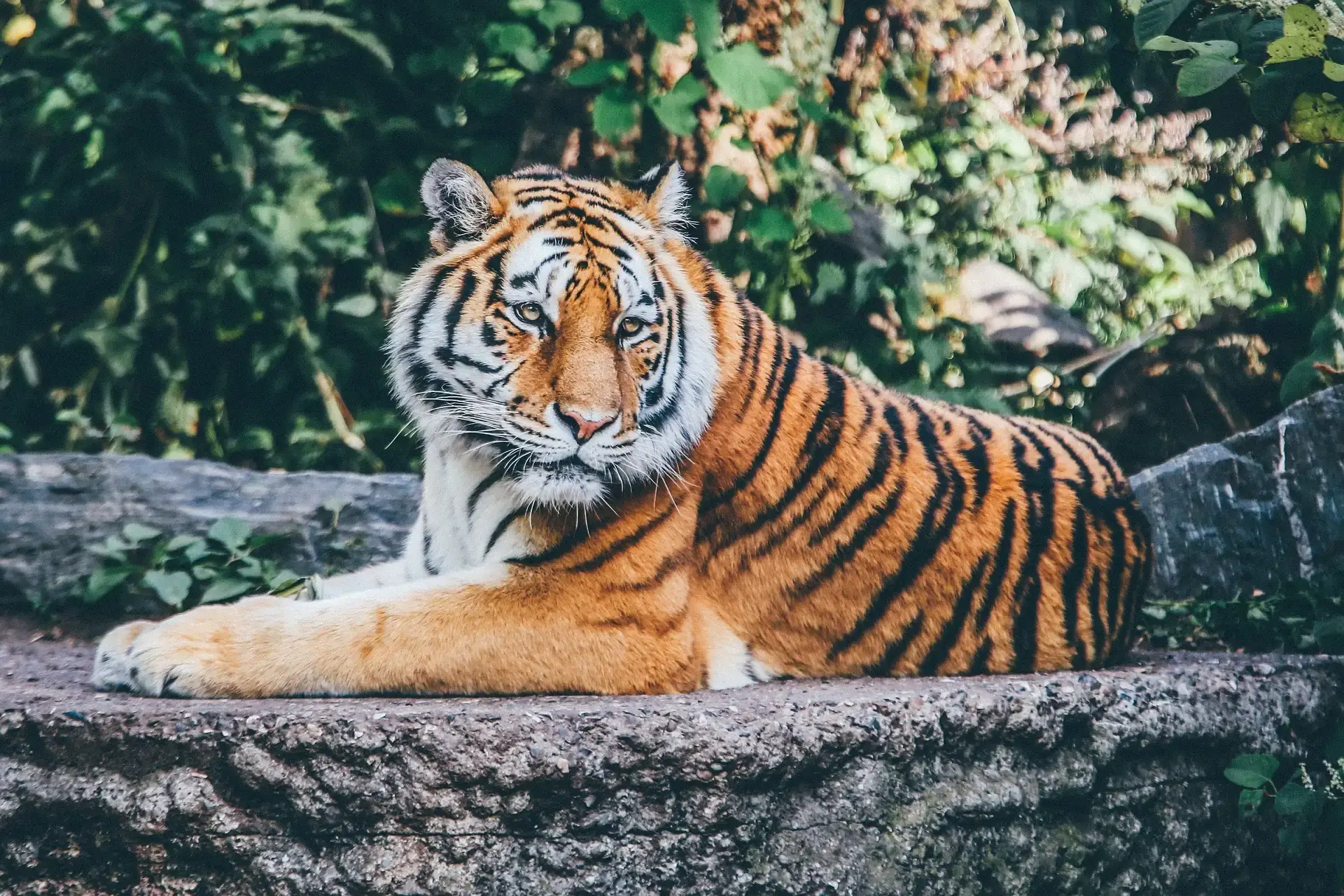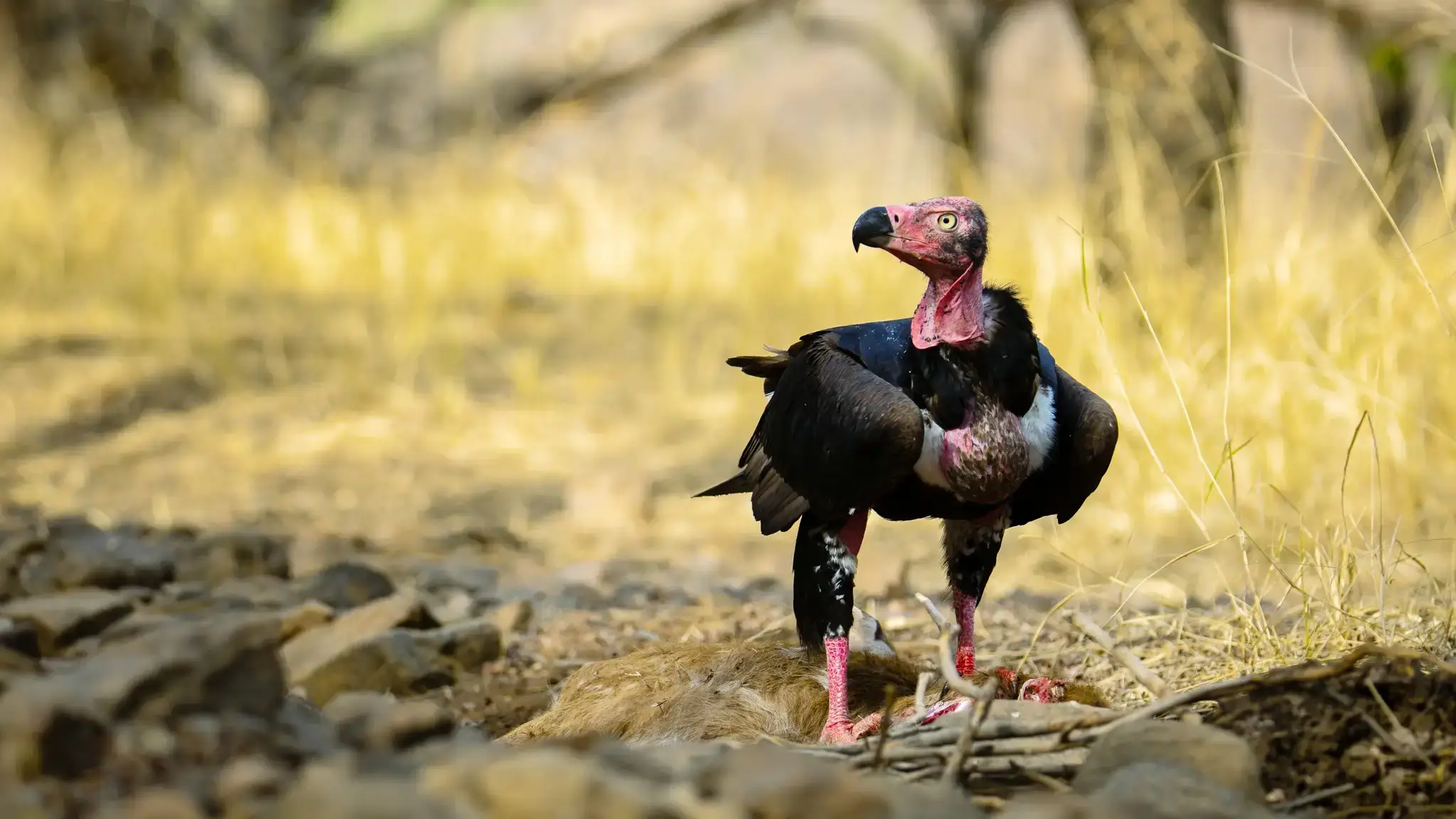7 min to read
India’s Remarkable Journey in Wildlife Protection

Have you ever wondered how India has become a global leader in tiger conservation?
In this blog post, we will explore the reasons behind the rise of the tigers in India and how India has become a global leader in tiger conservation and will also look at the challenges that lie ahead.
 Table of Contents
Table of Contents
- Table of Contents
- A Tiger in the Wild
- Tiger in India
- Project Tiger
- Wildlife Protection Act, 1972
- The Tiger Reserves
- Challenges and Solutions for Tiger Conservation
- How tiger is important for the ecosystem
- Conclusion
- Summary and Key Points
- References and Sources
 A Tiger in the Wild
A Tiger in the Wild
Tiger is the national animal of India and it is also the most iconic cat species and at the top of the food chain. With its majestic appearance and powerful roar, it is one of the most feared predators. You can recognize a tiger by its orange fur with black stripes, unique to each individual like our fingerprints. Isn’t it amazing?
 Tiger in India
Tiger in India
India is home to 75 % of the world’s wild tigers, a species that is endangered and facing multiple threats from habitat loss, poaching, and human-wildlife conflict. However, in the past decade, India has made remarkable progress in conserving and recovering its tiger population, thanks to political will, scientific expertise, community involvement, and international support.
According to the latest census released, the number of tigers in India has increased from 2,967 in 2018 to 3,682 in 2023. In 2006 it was 1,411 which means the tiger population has more than doubled in 16 years.
Project Tiger, the wildlife protection act, and tiger reserves are the three pillars of tiger conservation in India. Let’s look at each of them in detail.
 Project Tiger
Project Tiger
Project Tiger was launched in 1973 by the Government of India to protect tigers from extinction. It was required to protect the tiger and its habitat from poaching, habitat loss, and other threats. It was initially started in 9 tiger reserves and now it has been expanded to 53 tiger reserves across 18 states in India.
After 50 years, Project Tiger has been a success story. The tiger population has increased from 1,411 in 2006 to 3,682 in 2023. With the help of Project Tiger, India has become a global leader in tiger conservation.
 Wildlife Protection Act, 1972
Wildlife Protection Act, 1972
The Wildlife Protection Act, of 1972 is an Act of the Parliament of India enacted for the protection of plants and animal species. The Act provides for the protection of wild animals, birds, and plants. The wildlife protection act has been amended several times to include new species and to strengthen the provisions of the action and has significantly contributed to wildlife conservation in the last 50 years. Yet, there are many challenges that we need to overcome to protect our wildlife.
 The Tiger Reserves
The Tiger Reserves
India has 55 tiger reserve networks spread across 18 states covering an area of 75,795 sq km. Jim Corbett national park was the first tiger reserve in India which was established in 1936. Nagarjunsagar-Srisailam Tiger Reserve is the largest tiger reserve in India with an area of 3,296 sq km. Here are some of the important tiger reserves in India.
India has made a significant addition to its list of protected tiger conservation areas with the recent inclusion of the Dholpur-Karauli tiger reserve.
This reserve was officially declared a tiger reserve in 2023 and is now home to a total of nine majestic tigers. The reserve is a pristine natural habitat where these incredible animals can grow, offering visitors a rare glance into the beauty and power of these incredible creatures.
| Tiger Reserve | State | Area (sq km) |
|---|---|---|
| Nagarjunsagar-Srisailam Tiger Reserve | Andhra Pradesh | 3,296 |
| Namdapha Tiger Reserve | Arunachal Pradesh | 2,052 |
| Manas Tiger Reserve | Assam | 3,150 |
| Kaziranga Tiger Reserve | Assam | 1,173 |
| Sundarbans Tiger Reserve | West Bengal | 2,585 |
| Dudhwa Tiger Reserve | Uttar Pradesh | 2,201 |
| Kanha Tiger Reserve | Madhya Pradesh | 2,051 |
 Challenges and Solutions for Tiger Conservation
Challenges and Solutions for Tiger Conservation
Still, There are a lot of challenges ahead for tiger conservation in India. Here are some of the major challenges and solutions for tiger conservation. With the help of the government, NGOs, and local communities we can overcome these challenges. We have to come together to protect the tigers and their habitat.
 Human-wildlife conflict
Human-wildlife conflict
As the population is increasing, the human-wildlife conflict is also increasing. Human encroachment into the forest is one of the major reasons for human-wildlife conflict. Human population and Greedy for land and resources are the major reasons for human encroachment into the forest.
 Poaching and illegal trade
Poaching and illegal trade
Poaching and illegal trade of tiger parts are still major threats to the tiger population. some people poach tigers for their skin, bones, and other body parts, which are used in traditional Chinese medicine. By creating awareness among the people and involving local communities and Strengthening law enforcement we can reduce poaching and illegal trade.
 Habitat loss
Habitat loss
Habitat loss is another major threat, there are several reasons for habitat loss, like deforestation, mining, urbanization, etc. The solution for this is to create more protected areas and corridors for the tigers to move freely.
 Climate change
Climate change
Climate change is the biggest threat to wildlife and it is also affecting the tiger population. Habitat loss, water scarcity, and extreme weather conditions are the major threats to the tiger. We can reduce the impact of climate change by reducing carbon emissions.
 Lack of awareness
Lack of awareness
Lack of awareness is also a major threat to the tiger population. We have to create awareness among the people about the importance of tigers and their habitat. We have to educate the people about the importance of tigers and their habitat.
 How tiger is important for the ecosystem
How tiger is important for the ecosystem
Tiger is an apex predator and it is at the top of the food chain, which means that it has no natural predators. It has a significant role in the maintenance of the ecosystem.
 Conclusion
Conclusion
We have achieved a lot in the last 50 years, but still, there are a lot of challenges ahead. We have to come together to protect the tigers and other wildlife as well. It’s a long journey, but we can do it step by step 🐾.
 Summary and Key Points
Summary and Key Points
Here are some of the key points from the article:
- India is home to 75% of the world’s wild tigers.
- The tiger population in India has more than doubled in the past 16 years.
- Project Tiger, the Wildlife Protection Act, and tiger reserves are the three pillars of tiger conservation in India.
- The challenges that lie ahead for tiger conservation in India include climate change and lack of awareness.
- There are now over 50 tiger reserves in India, and the government is working to create even more.
- The program has been very successful, and the tiger population in India has now increased to over 3,000.
- The program has also helped to raise awareness of the plight of tigers and the importance of wildlife conservation.
 References and Sources
References and Sources
Data and Statistics are collected from the following sources. Please check the sources for more information.
- India home to 75 % global tiger population, says ADGF Project Tiger
- EIACP Programme Centre “Wildlife & Protected Areas Management
- Project Tiger
- How to reduce the carbon footprints
Awareness is the first step towards conservation. Share this article with your friends and family members to create awareness.






Comments